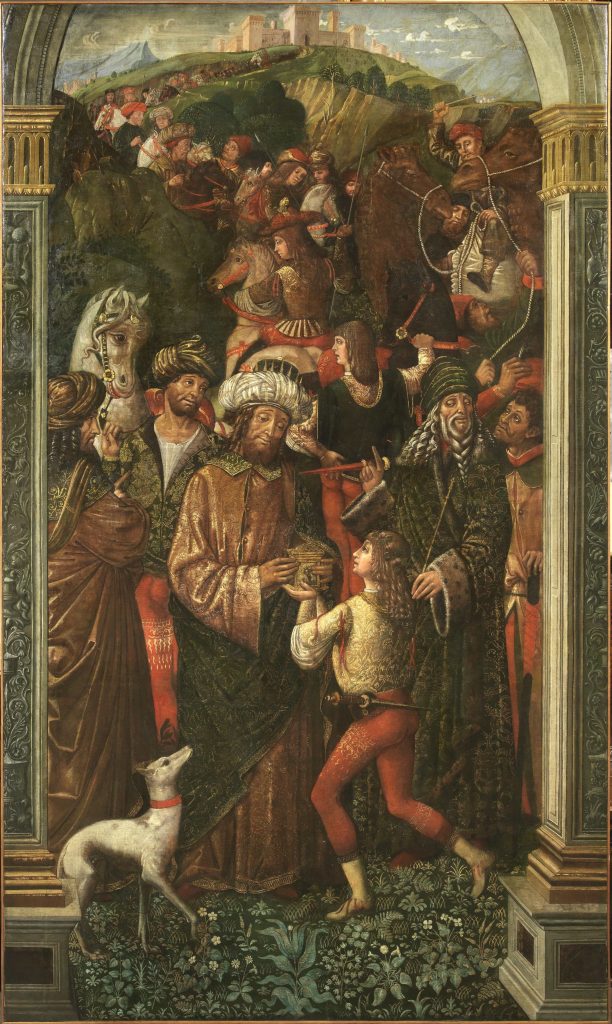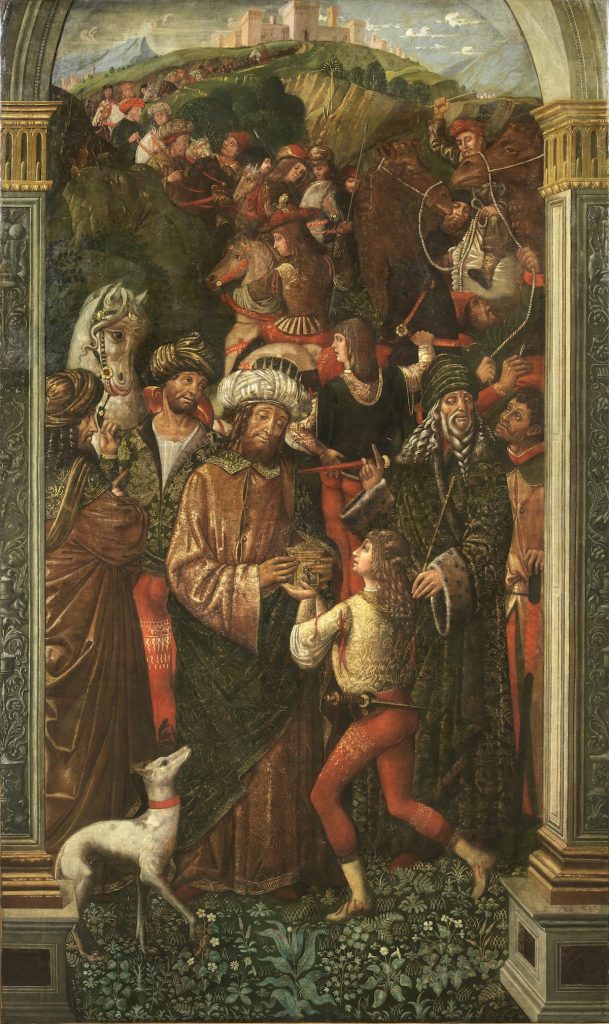BERNARDINO DI BETTO known as PINTURICCHIO, school of
Perugia, 1452 ca. – Siena, 1513
The meeting of the Magi
tempera on canvas, cm 265×158
Set within a classical-style architectural frame, this large canvas depicts an episode from the long journey that would lead the three Magi to the new-born Jesus to offer him their precious gifts. The comprehensive study by Expertise, Periti d’Arte Associati, which accompanies the work, underscores how the unusual image, referring “to the meeting of the three kings and the preparation of the procession that would travel to pay tribute to the Saviour”, narrates an event that is not described in the canonical gospels, and that “the iconographical sources [are] therefore to be sought in apocryphal texts and in the Armenian Gospel of the Infancy”. The fairy-tale flavour, the sumptuous oriental-style costumes and the crowded characters still spaced according to medieval criteria, are reminiscent of the well-known depictions of this subject. They include the famous Strozzi Altarpiece by Gentile da Fabriano for San Niccolò d’Oltrarno, now in the Uffizi, and the Magi Chapel, frescoed by Benozzo Gozzoli in the Florentine Medici Palace in around the mid-15th century.
However, as observed in the study, the source upon which this depiction draws, is later. The scene is organised differently, so much so that it is undoubtedly modelled on the frescoes by Pinturicchio and his circle in the Piccolomini Library in Siena, painted in the first half of the 16th century to narrate the stories of Pius II. In greater detail, the grotesque decoration of the pilasters and capitals in the architectural frame seems to be borrowed directly from the Sienese figurative text. However, a noteworthy detail is that the perspective with which the archway is represented is not central, as in the reference fresco, but takes into account a lateral view. This detail reveals that it originally belonged to a cycle of canvases, evidently dedicated to the journey of the Magi, and that, in all likelihood, culminated in the centre of a vast hall in an ‘Adoration of the Child’.
The intriguing matter of the identification of the author, based on the work of the great Umbrian master, is still open. The central Italian character of the work seems to be combined with northern reminiscences in the castle above, outlined by a clear, brilliant light.
Publications:
“Oltre. In viaggio con cercatori, fuggitivi, pellegrini”, exhibition catalogue edited by don Alessio Geretti, Casa delle Esposizioni di Illegio, Allemandi, Turin, 2016, p.155.


